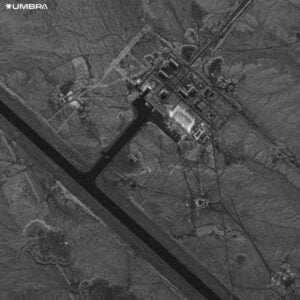Umbra launches worlds most capable commercial radar-imaging satellite

Umbra launched their first commercial radar satellite with Synthetic Aperture Radar (SAR) capabilities. Umbra’s satellite has a unique imaging payload which can see though clouds, smoke and total darkness with industry leading resolution down to 10 inches.
Umbra, a next-generation intelligence company, launched the first commercial microsatellite of its planned constellation on the SpaceX Transporter-2 mission. The Umbra SAR-2001 radar-imaging microsatellite rode into orbit on a Falcon 9 rocket launched from Cape Canaveral Space Force Station.
Until now, access to high-resolution satellite imagery has been a privilege reserved for only the largest military powers. Soon, however, researchers, businesses, and US government partners will have timely access to the highest-quality Earth observation data available for the lowest prices on the market, via Umbra’s seamless direct tasking platform.
“Today represents the culmination of a years-long dream,” said Gabe Dominocielo, co-founder and chief strategy officer of Umbra. “We’re giving our customers the tools and data they need to solve critical problems and to help make the world a better place. Researchers, businesses, and defense agencies will have the full power of next-gen satellite imagery at their fingertips. I am grateful to all of the incredible Umbra employees who made this possible, and we are all looking forward to launching our next groups of satellites to complete our constellation.”
Now in space, the Umbra’s patented antenna will expand from its dorm fridge-sized launch configuration into a parabolic dish larger than an SUV. Its industry-leading 1,200MHz bandwidth and powerful Synthetic Aperture Radar (SAR) technology is capable of seeing at night and through dense clouds to generate the highest resolution radar images ever sold on the commercial market.
Umbra will soon begin to onboard customers to Canopy, which is its self-service tasking platform. Using Canopy, Umbra customers will no longer have to negotiate complex pricing and contractual arrangements with imagery providers, but will be able to directly task satellites to generate high-quality satellite images anywhere in the world.
Umbra’s constellation will be able to identify and monitor surface-level changes globally, and can be used for a variety of important efforts, including remote wildlife habitat protection, pollution and plastic waste tracking, oil spill detection, military intelligence gathering, live flooding estimation during storms, and more.
Umbra’s mission is to provide reliable and affordable day-night, all-weather geospatial intelligence on demand. Umbra is continuing to expand their 55-person plus team, with new job openings in engineering, product, software, operations, and marketing in both our Austin and Santa Barbara offices. For more information on openings, please visit our careers page.


